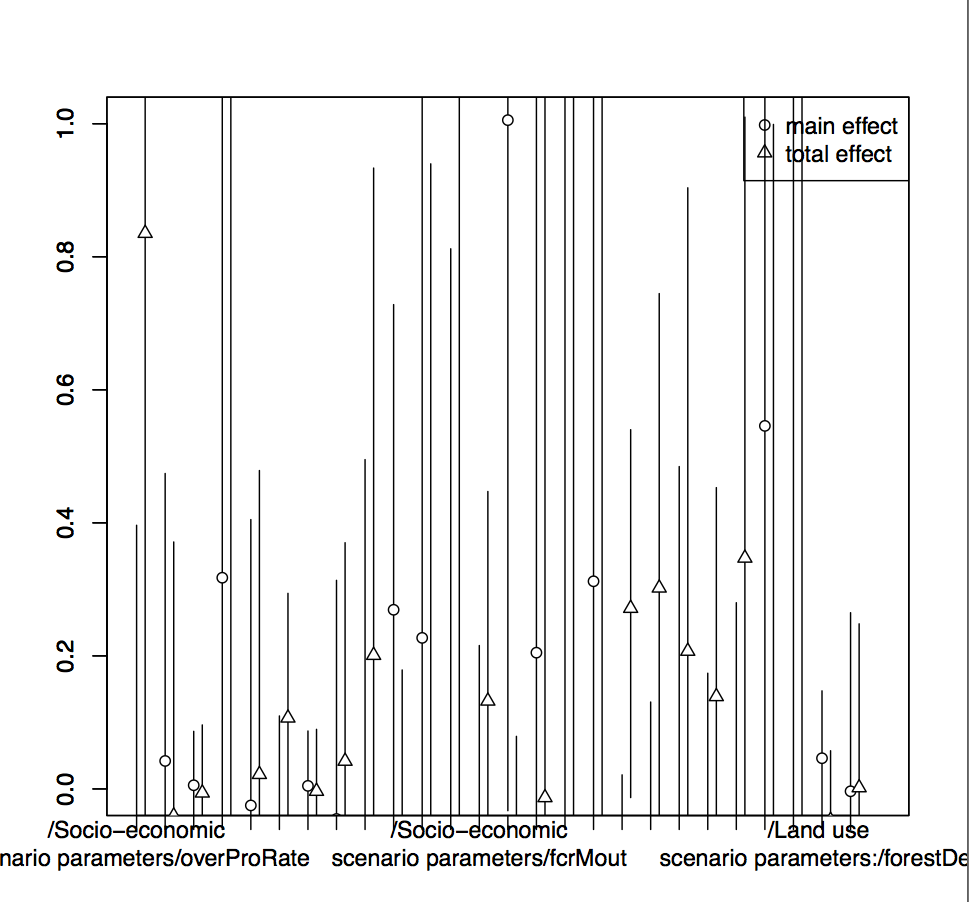I'm trying to use the sobol2007 model in the R sensitivity package. I'm doing runs on a model with 26 parameters, and using 2 sets of 500 monte-carlo samples to seed the analysis, and nboot=500. This results in 14k runs
When I generate the sensitivity results, I'm expecting numbers in 0..1, but I get both * negative numbers * very high numbers (e.g. 10)
When I plot the model, I can see that the confidence intervals are gigantic:

It feels like 14k runs should be reasonable to estimate this number of parameters, but maybe I'm being overly optimistic.
Can anyone answer:
- am I totally unrealistic, and/or how many runs should I be using?
- can I read anything from these outputs, or are they essentially so noisy as to be worthless?
- how should I be selecting nboot - there's no guidance in the docs?





